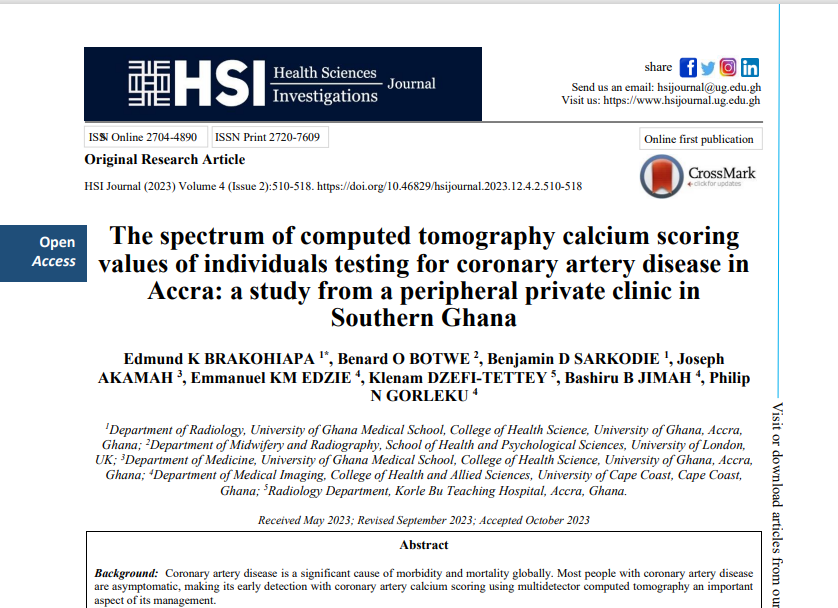The spectrum of computed tomography calcium scoring values of individuals testing for coronary artery disease in Accra: a study from a peripheral private clinic in Southern Ghana.
The spectrum of computed tomography calcium score findings
Abstract
Background: Coronary artery disease is a significant cause of morbidity and mortality globally. Most people with coronary artery disease are asymptomatic, making its early detection with coronary artery calcium scoring using multidetector computed tomography an important aspect of its management.
Objective: Our study aimed to describe the spectrum of computed tomography findings (such as the absolute coronary artery calcium scores and coronary artery risk percentiles) and associated risk factors of 325 patients evaluated for coronary artery disease in Accra.
Methods: The study was a retrospective study involving retrieving electronically stored coronary artery calcium score reports for 325 patients reported by two radiologists. Patient information, including weight, blood pressure, and a history of diabetes mellitus and hypertension, were recorded. Data were analysed using Statistical Package for the Social Sciences version 23.
Results: There were 62.2% (n = 202) males and 37.8% ( n = 123) females. Of the total number, 44.6% (n = 145) had a normal coronary artery calcium score of 0, while 55.4% (n = 180) had values ranging from 1 to 2,690 (mean 109.0 ± 325.4). The two most prevalent modifiable risk factors for coronary artery disease recorded for individuals with coronary artery calcium score above 0 were an abnormality of weight (overweight and obesity) and hypertension in decreasing order. A significant relationship was observed between coronary artery calcium
scoring and age (p = 0.001).
Conclusion: Our study showed that more than half of the participants had coronary artery calcification; abnormalities of weight followed by hypertension were the two commonest risk factors for CAD in Accra, and CAD occurred in individuals as young as 30 to 39 years old


